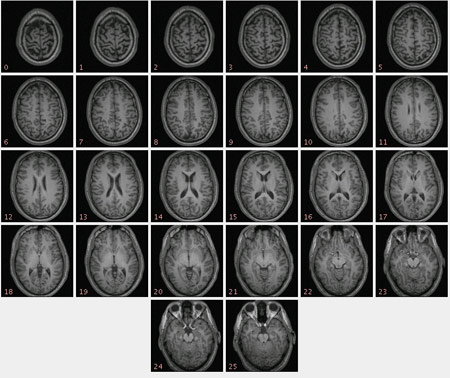Unlocking the Mysteries of the Brain
Major advances have been made over the last decade in our ability to examine the anatomy and function of the human brain using noninvasive brain imaging such as functional magnetic resonance imaging (fMRI).
 These techniques have opened up new frontiers in the basic sciences that are only beginning to be used to diagnose and treat patients. Neurosurgeons may be able to use brain mapping to plan safer surgeries, or to diagnose neurodegenerative diseases like Parkinson’s and Alzheimer’s by understanding what goes wrong physically in the brain during these diseases.
These techniques have opened up new frontiers in the basic sciences that are only beginning to be used to diagnose and treat patients. Neurosurgeons may be able to use brain mapping to plan safer surgeries, or to diagnose neurodegenerative diseases like Parkinson’s and Alzheimer’s by understanding what goes wrong physically in the brain during these diseases.
Researchers like Web Pilcher, chair of the Department of Neurosurgery and the Ernest & Thelma Del Monte Distinguished Professor in Neuromedicine, and Brad Mahon, assistant professor of brain and cognitive sciences and neurosurgery and at the Center for Visual Sciences, are collaboratively investigating how vast quantities of Big Data can help us analyze the brain more intimately. They are analyzing images of the brain, models of neuron behavior, and maps of the genes that are “turned on” in different brain regions. By making the data sharable and searchable, brain researchers can piggyback off of one another’s studies and discover more ways to improve outcomes for patients.
Photo by dmv is licensed under CC BY 2.0
